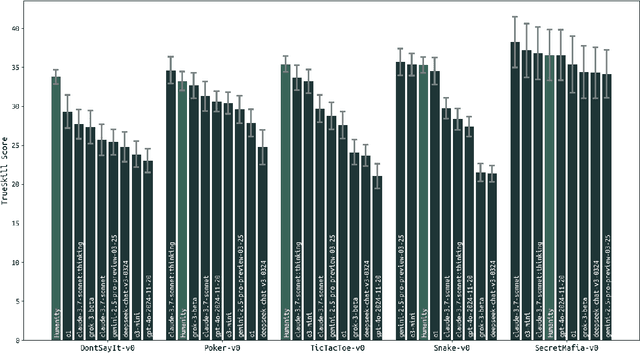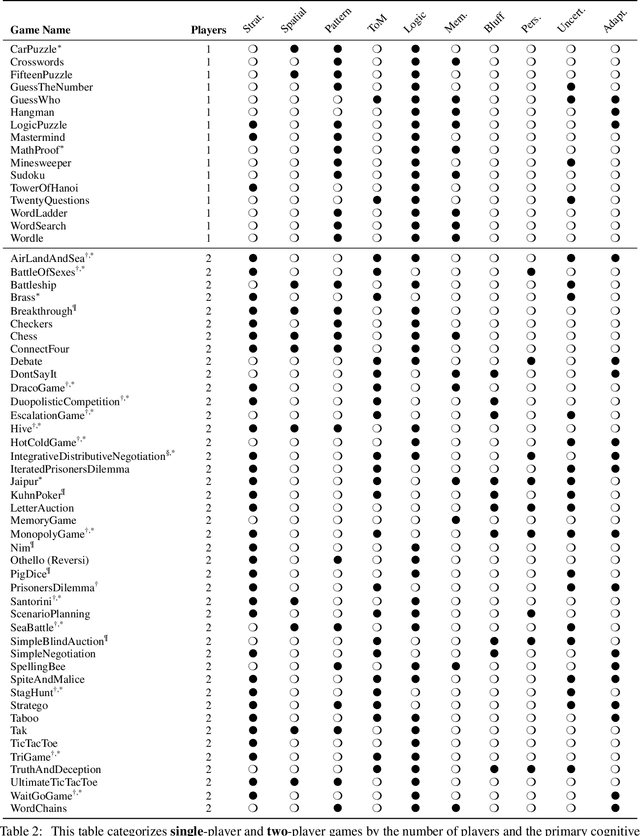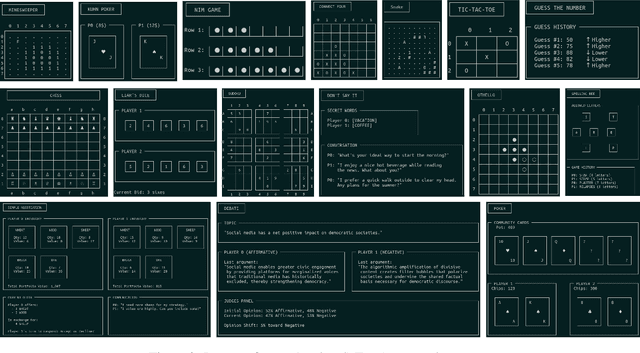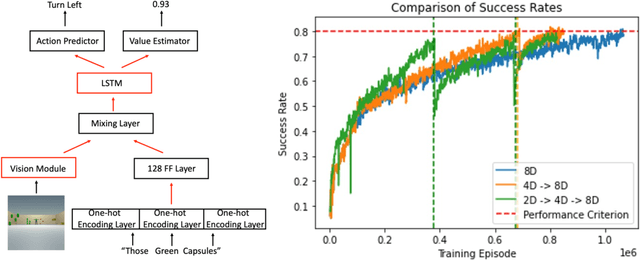Cheston Tan
FailSafe: Reasoning and Recovery from Failures in Vision-Language-Action Models
Oct 02, 2025Abstract:Recent advances in robotic manipulation have integrated low-level robotic control into Vision-Language Models (VLMs), extending them into Vision-Language-Action (VLA) models. Although state-of-the-art VLAs achieve strong performance in downstream robotic applications, supported by large-scale crowd-sourced robot training data, they still inevitably encounter failures during execution. Enabling robots to reason about and recover from unpredictable and abrupt failures remains a critical challenge. Existing robotic manipulation datasets, collected in either simulation or the real world, primarily provide only ground-truth trajectories, leaving robots unable to recover once failures occur. Moreover, the few datasets that address failure detection typically offer only textual explanations, which are difficult to utilize directly in VLA models. To address this gap, we introduce FailSafe, a novel failure generation and recovery system that automatically produces diverse failure cases paired with executable recovery actions. FailSafe can be seamlessly applied to any manipulation task in any simulator, enabling scalable creation of failure-action data. To demonstrate its effectiveness, we fine-tune LLaVa-OneVision-7B (LLaVa-OV-7B) to build FailSafe-VLM. Experimental results show that FailSafe-VLM successfully helps robotic arm detect and recover from potential failures, improving the performance of three state-of-the-art VLA models pi0-FAST, OpenVLA, OpenVLA-OFT) by up to 22.6% on average across several tasks in Maniskill. Furthermore, FailSafe-VLM could generalize across different spatial configurations, camera viewpoints, and robotic embodiments. We plan to release the FailSafe code to the community.
The Singapore Consensus on Global AI Safety Research Priorities
Jun 25, 2025Abstract:Rapidly improving AI capabilities and autonomy hold significant promise of transformation, but are also driving vigorous debate on how to ensure that AI is safe, i.e., trustworthy, reliable, and secure. Building a trusted ecosystem is therefore essential -- it helps people embrace AI with confidence and gives maximal space for innovation while avoiding backlash. The "2025 Singapore Conference on AI (SCAI): International Scientific Exchange on AI Safety" aimed to support research in this space by bringing together AI scientists across geographies to identify and synthesise research priorities in AI safety. This resulting report builds on the International AI Safety Report chaired by Yoshua Bengio and backed by 33 governments. By adopting a defence-in-depth model, this report organises AI safety research domains into three types: challenges with creating trustworthy AI systems (Development), challenges with evaluating their risks (Assessment), and challenges with monitoring and intervening after deployment (Control).
From Grunts to Grammar: Emergent Language from Cooperative Foraging
May 19, 2025Abstract:Early cavemen relied on gestures, vocalizations, and simple signals to coordinate, plan, avoid predators, and share resources. Today, humans collaborate using complex languages to achieve remarkable results. What drives this evolution in communication? How does language emerge, adapt, and become vital for teamwork? Understanding the origins of language remains a challenge. A leading hypothesis in linguistics and anthropology posits that language evolved to meet the ecological and social demands of early human cooperation. Language did not arise in isolation, but through shared survival goals. Inspired by this view, we investigate the emergence of language in multi-agent Foraging Games. These environments are designed to reflect the cognitive and ecological constraints believed to have influenced the evolution of communication. Agents operate in a shared grid world with only partial knowledge about other agents and the environment, and must coordinate to complete games like picking up high-value targets or executing temporally ordered actions. Using end-to-end deep reinforcement learning, agents learn both actions and communication strategies from scratch. We find that agents develop communication protocols with hallmark features of natural language: arbitrariness, interchangeability, displacement, cultural transmission, and compositionality. We quantify each property and analyze how different factors, such as population size and temporal dependencies, shape specific aspects of the emergent language. Our framework serves as a platform for studying how language can evolve from partial observability, temporal reasoning, and cooperative goals in embodied multi-agent settings. We will release all data, code, and models publicly.
Position Paper: Rethinking Privacy in RL for Sequential Decision-making in the Age of LLMs
Apr 15, 2025Abstract:The rise of reinforcement learning (RL) in critical real-world applications demands a fundamental rethinking of privacy in AI systems. Traditional privacy frameworks, designed to protect isolated data points, fall short for sequential decision-making systems where sensitive information emerges from temporal patterns, behavioral strategies, and collaborative dynamics. Modern RL paradigms, such as federated RL (FedRL) and RL with human feedback (RLHF) in large language models (LLMs), exacerbate these challenges by introducing complex, interactive, and context-dependent learning environments that traditional methods do not address. In this position paper, we argue for a new privacy paradigm built on four core principles: multi-scale protection, behavioral pattern protection, collaborative privacy preservation, and context-aware adaptation. These principles expose inherent tensions between privacy, utility, and interpretability that must be navigated as RL systems become more pervasive in high-stakes domains like healthcare, autonomous vehicles, and decision support systems powered by LLMs. To tackle these challenges, we call for the development of new theoretical frameworks, practical mechanisms, and rigorous evaluation methodologies that collectively enable effective privacy protection in sequential decision-making systems.
TextArena
Apr 15, 2025



Abstract:TextArena is an open-source collection of competitive text-based games for training and evaluation of agentic behavior in Large Language Models (LLMs). It spans 57+ unique environments (including single-player, two-player, and multi-player setups) and allows for easy evaluation of model capabilities via an online-play system (against humans and other submitted models) with real-time TrueSkill scores. Traditional benchmarks rarely assess dynamic social skills such as negotiation, theory of mind, and deception, creating a gap that TextArena addresses. Designed with research, community and extensibility in mind, TextArena emphasizes ease of adding new games, adapting the framework, testing models, playing against the models, and training models. Detailed documentation of environments, games, leaderboard, and examples are available on https://github.com/LeonGuertler/TextArena and https://www.textarena.ai/.
Human-like compositional learning of visually-grounded concepts using synthetic environments
Apr 09, 2025



Abstract:The compositional structure of language enables humans to decompose complex phrases and map them to novel visual concepts, showcasing flexible intelligence. While several algorithms exhibit compositionality, they fail to elucidate how humans learn to compose concept classes and ground visual cues through trial and error. To investigate this multi-modal learning challenge, we designed a 3D synthetic environment in which an agent learns, via reinforcement, to navigate to a target specified by a natural language instruction. These instructions comprise nouns, attributes, and critically, determiners, prepositions, or both. The vast array of word combinations heightens the compositional complexity of the visual grounding task, as navigating to a blue cube above red spheres is not rewarded when the instruction specifies navigating to "some blue cubes below the red sphere". We first demonstrate that reinforcement learning agents can ground determiner concepts to visual targets but struggle with more complex prepositional concepts. Second, we show that curriculum learning, a strategy humans employ, enhances concept learning efficiency, reducing the required training episodes by 15% in determiner environments and enabling agents to easily learn prepositional concepts. Finally, we establish that agents trained on determiner or prepositional concepts can decompose held-out test instructions and rapidly adapt their navigation policies to unseen visual object combinations. Leveraging synthetic environments, our findings demonstrate that multi-modal reinforcement learning agents can achieve compositional understanding of complex concept classes and highlight the efficacy of human-like learning strategies in improving artificial systems' learning efficiency.
FedHPD: Heterogeneous Federated Reinforcement Learning via Policy Distillation
Feb 02, 2025



Abstract:Federated Reinforcement Learning (FedRL) improves sample efficiency while preserving privacy; however, most existing studies assume homogeneous agents, limiting its applicability in real-world scenarios. This paper investigates FedRL in black-box settings with heterogeneous agents, where each agent employs distinct policy networks and training configurations without disclosing their internal details. Knowledge Distillation (KD) is a promising method for facilitating knowledge sharing among heterogeneous models, but it faces challenges related to the scarcity of public datasets and limitations in knowledge representation when applied to FedRL. To address these challenges, we propose Federated Heterogeneous Policy Distillation (FedHPD), which solves the problem of heterogeneous FedRL by utilizing action probability distributions as a medium for knowledge sharing. We provide a theoretical analysis of FedHPD's convergence under standard assumptions. Extensive experiments corroborate that FedHPD shows significant improvements across various reinforcement learning benchmark tasks, further validating our theoretical findings. Moreover, additional experiments demonstrate that FedHPD operates effectively without the need for an elaborate selection of public datasets.
FedRLHF: A Convergence-Guaranteed Federated Framework for Privacy-Preserving and Personalized RLHF
Dec 20, 2024



Abstract:In the era of increasing privacy concerns and demand for personalized experiences, traditional Reinforcement Learning with Human Feedback (RLHF) frameworks face significant challenges due to their reliance on centralized data. We introduce Federated Reinforcement Learning with Human Feedback (FedRLHF), a novel framework that decentralizes the RLHF process. FedRLHF enables collaborative policy learning across multiple clients without necessitating the sharing of raw data or human feedback, thereby ensuring robust privacy preservation. Leveraging federated reinforcement learning, each client integrates human feedback locally into their reward functions and updates their policies through personalized RLHF processes. We establish rigorous theoretical foundations for FedRLHF, providing convergence guarantees, and deriving sample complexity bounds that scale efficiently with the number of clients. Empirical evaluations on the MovieLens and IMDb datasets demonstrate that FedRLHF not only preserves user privacy but also achieves performance on par with centralized RLHF, while enhancing personalization across diverse client environments.
Learning to Reason Iteratively and Parallelly for Complex Visual Reasoning Scenarios
Nov 20, 2024Abstract:Complex visual reasoning and question answering (VQA) is a challenging task that requires compositional multi-step processing and higher-level reasoning capabilities beyond the immediate recognition and localization of objects and events. Here, we introduce a fully neural Iterative and Parallel Reasoning Mechanism (IPRM) that combines two distinct forms of computation -- iterative and parallel -- to better address complex VQA scenarios. Specifically, IPRM's "iterative" computation facilitates compositional step-by-step reasoning for scenarios wherein individual operations need to be computed, stored, and recalled dynamically (e.g. when computing the query "determine the color of pen to the left of the child in red t-shirt sitting at the white table"). Meanwhile, its "parallel" computation allows for the simultaneous exploration of different reasoning paths and benefits more robust and efficient execution of operations that are mutually independent (e.g. when counting individual colors for the query: "determine the maximum occurring color amongst all t-shirts"). We design IPRM as a lightweight and fully-differentiable neural module that can be conveniently applied to both transformer and non-transformer vision-language backbones. It notably outperforms prior task-specific methods and transformer-based attention modules across various image and video VQA benchmarks testing distinct complex reasoning capabilities such as compositional spatiotemporal reasoning (AGQA), situational reasoning (STAR), multi-hop reasoning generalization (CLEVR-Humans) and causal event linking (CLEVRER-Humans). Further, IPRM's internal computations can be visualized across reasoning steps, aiding interpretability and diagnosis of its errors.
Evaluating the Generation of Spatial Relations in Text and Image Generative Models
Nov 12, 2024



Abstract:Understanding spatial relations is a crucial cognitive ability for both humans and AI. While current research has predominantly focused on the benchmarking of text-to-image (T2I) models, we propose a more comprehensive evaluation that includes \textit{both} T2I and Large Language Models (LLMs). As spatial relations are naturally understood in a visuo-spatial manner, we develop an approach to convert LLM outputs into an image, thereby allowing us to evaluate both T2I models and LLMs \textit{visually}. We examined the spatial relation understanding of 8 prominent generative models (3 T2I models and 5 LLMs) on a set of 10 common prepositions, as well as assess the feasibility of automatic evaluation methods. Surprisingly, we found that T2I models only achieve subpar performance despite their impressive general image-generation abilities. Even more surprisingly, our results show that LLMs are significantly more accurate than T2I models in generating spatial relations, despite being primarily trained on textual data. We examined reasons for model failures and highlight gaps that can be filled to enable more spatially faithful generations.
 Add to Chrome
Add to Chrome Add to Firefox
Add to Firefox Add to Edge
Add to Edge